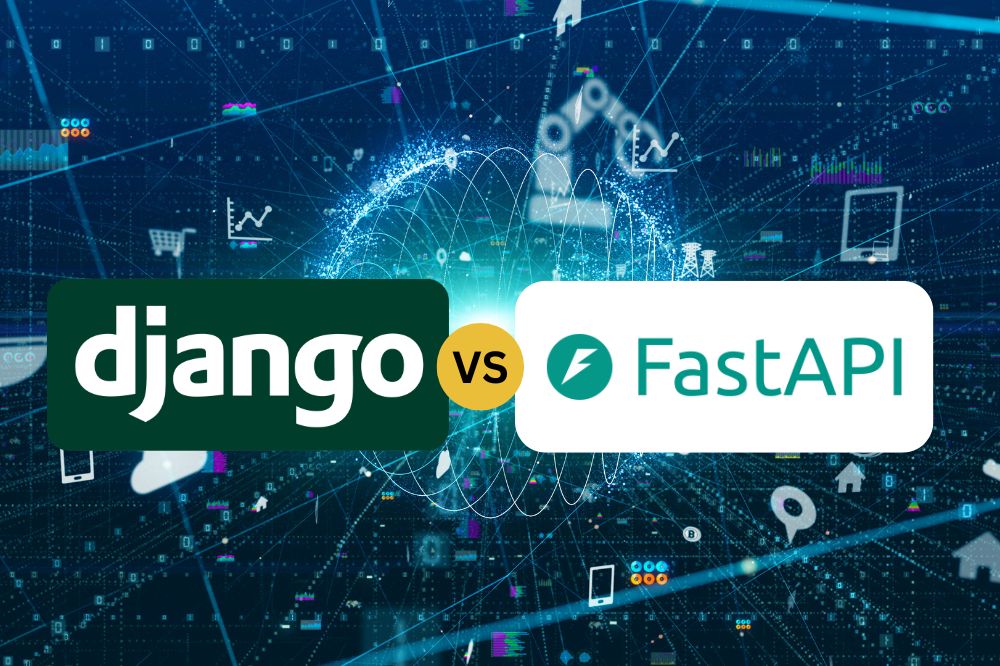Python remains a dominant language for web development, with Django and FastAPI standing out as two of the most popular frameworks. But which one should you use in 2025? This comparison will help you decide based on performance, scalability, and use cases.
Django: The Robust Full-Stack Framework
Overview:
Django is a high-level Python web framework that follows the “batteries-included” philosophy, offering built-in authentication, ORM (Object-Relational Mapping), and an admin panel. It is best suited for large-scale applications requiring rapid development and security.

Key Features:
- 🏗️ Mature and Well-Established: Over 15 years in the industry.
- 🌐 Full-Stack Capabilities: Comes with everything needed for backend and frontend development.
- 🔐 Security: Protects against SQL injection, XSS, CSRF, and other vulnerabilities.
- 🗄️ ORM for Database Management: Works seamlessly with multiple databases.
- 📈 Scalability: Can handle large applications with proper optimization.
Best Use Cases:
- 🛒 E-commerce platforms (e.g., Shopify-like applications)
- 📝 Content management systems (CMS)
- 🏢 Enterprise applications
- 📱 Social media platforms
FastAPI: The Fast and Asynchronous Alternative
Overview:
FastAPI is a modern, high-performance framework designed for building APIs with Python. It leverages asynchronous programming to handle requests faster than traditional synchronous frameworks.

Key Features:
- ⚡ Speed: One of the fastest Python frameworks, thanks to ASGI (Asynchronous Server Gateway Interface).
- 🏷️ Type Annotations: Uses Python type hints to improve developer productivity and error detection.
- 📄 Automatic API Documentation: Generates OpenAPI and Swagger documentation automatically.
- 🚀 Efficient Request Handling: Optimized for high-concurrency workloads.
- 🔄 Dependency Injection: Simplifies code structure and testing.
Best Use Cases:
- 🌍 High-performance APIs
- 🏗️ Microservices architecture
- 💬 Real-time applications (e.g., chat apps, stock trading platforms)
- 🤖 Machine learning model deployments
Django vs. FastAPI: Key Differences
| Feature | Django 🏗️ | FastAPI ⚡ |
|---|---|---|
| Speed | Moderate 🚶 | Extremely fast 🚀 |
| Asynchronous Support | Limited ❌ | Fully asynchronous ✅ |
| Built-in Features | Comprehensive 📦 | Minimalist 🎯 |
| Scalability | High (with optimization) 📈 | High (native async support) 🔄 |
| Best for | Full-stack applications 🏢 | API-driven applications 🌍 |
Which One Should You Choose?
The choice between Django and FastAPI depends on your project requirements:
- 🏗️ Choose Django if you need a full-stack framework with built-in features for rapid development.
- ⚡ Choose FastAPI if you’re building a high-performance, async API that requires speed and scalability.
Final Thoughts
Both Django and FastAPI are excellent Python web frameworks, each excelling in different areas. If you’re working on a traditional web application, Django is the go-to choice. However, if performance and async capabilities are critical, FastAPI is the way forward in 2025.



